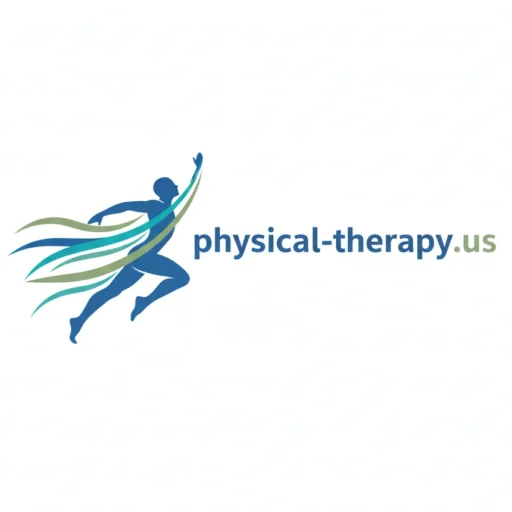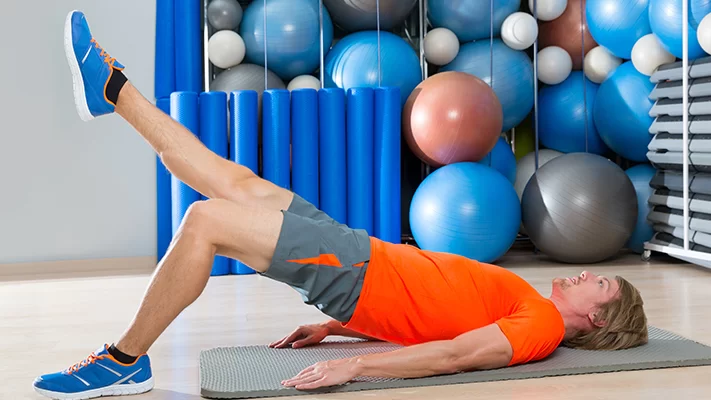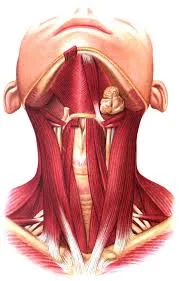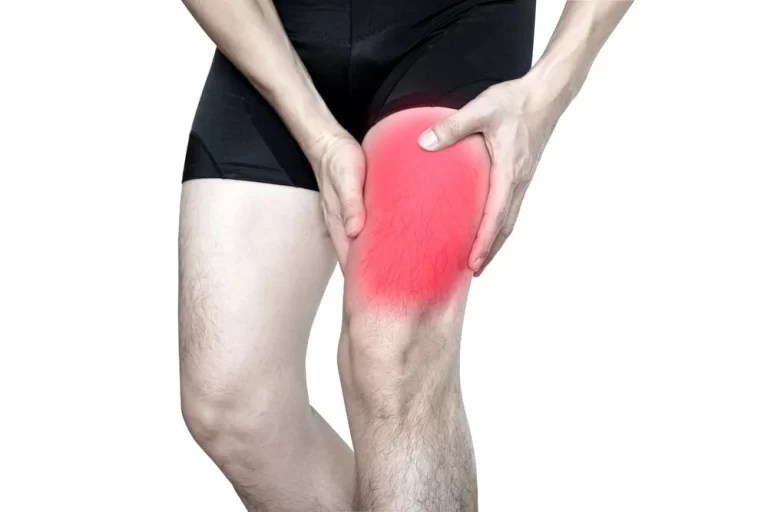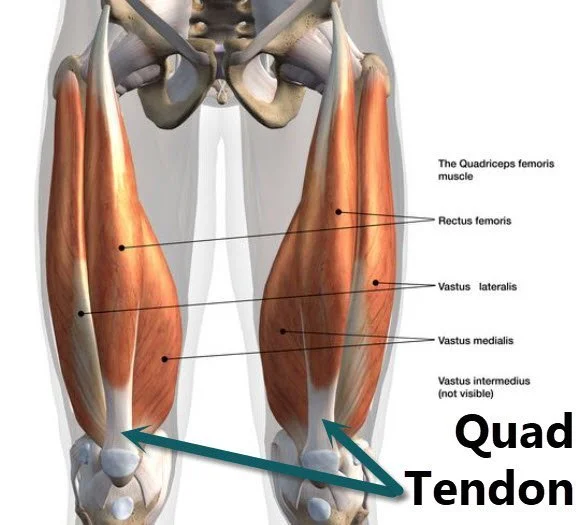15 Best Exercise For Guillain-Barre Syndrome (GBS)
Introduction:
The rare autoimmune neurological condition known as Guillain-Barré Syndrome (GBS) occurs when the body’s immune system unintentionally targets peripheral nerves. Guillain-Barré Syndrome (GBS) recovery can be unpredictable and gradual, but physical therapy and exercise are essential for restoring independence, function, and mobility.
This causes weakness, tingling, altered sensations, and paralysis, and modifies how signals from the brain move through the body. Yet Guillain-Barré Syndrome does not currently have a recognized treatment. Some treatments, however, lessen the severity of the illness. For the length of Guillain-Barré syndrome, physical therapy is one such necessary treatment.
Although physical therapy focuses on endurance training, muscle rehabilitation, and functional restoration, Exercise for Guillain-Barre Syndrome (GBS) helps people maintain strength and stay active.
Physical therapy should be initiated right away and continued until the patient recovers as much as possible if they have Guillain-Barre Syndrome (GBS). Restoring mobility and balance, strengthening muscles, maintaining joint ranges of motion, and retraining the natural movement patterns required for independent living and normal function are the goals of physical therapy rehabilitation. Depending on the parts of the body affected and the degree of illness progression, different treatments may be needed.
When it comes to helping people recover from Guillain-Barre Syndrome (GBS), physical therapists are experienced. They help patients in learning how to lower their risk of falling and how Guillain-Barre Syndrome (GBS) affects their capacity for safe mobility. Guillain-Barre Syndrome (GBS) patients can benefit from individualized treatment regimens created by physical therapists.
Guillain-Barre Syndrome Exercise Types (GBS):
Exercises for Range of Motion (ROM)
- To prevent stiffness and joint and muscle contractures, these are important in the early phases.
Balance and Coordination Exercises
- Exercises like standing yoga positions (like tree pose) or stair step-ups can help with Guillain-Barre Syndrome (GBS) because they can impair balance and coordination.
Endurance Training
- Walking and cycling are examples of endurance workouts that can assist increase general fitness once strength and balance have improved.
Functional Training
- The goal of these exercises is to regain the capacity to carry out daily tasks like progressive getting around, safe transfers, and balance exercises.
Strength Training
- Strength training is crucial for maintaining and increasing muscle mass as nerve function starts to recover.
- Weights, resistance bands, or even movements like arm and leg raises can be used for this.
Benefits of exercise:
Improve Muscle Endurance and Strength
- Severe muscle weakness or possibly paralysis can result from Guillain-Barre Syndrome (GBS).
- Exercise helps prevent muscular atrophy, increases endurance, and helps recover lost muscle strength.
Encourages Nerve Healing
- Promotes neuroplasticity to increase.
- Enhances muscle and nervous system reconnection and nerve regeneration.
Enhances Mental Well-being
- Stress, worry, and depression related to the gradual healing process are reduced by physical activity.
- Increases motivation by encouraging a feeling of control and advancement.
Improves Heart Health
- Walking and swimming are examples of aerobic exercises that enhance heart and lung function, particularly following extended periods of inactivity.
Improves Flexibility and Mobility
- Joint flexibility and range of motion are improved by mild stretching and movement.
- Better walking ability, balance, and coordination are encouraged when nerve function is restored.
Lessens Fatigue
- Even while Guillain-Barre Syndrome (GBS)frequently causes fatigue, over time, moderate, controlled activity can help lessen chronic fatigue by increasing stamina.
Facilitates the Development of Functional Independence
- Helps patients in getting back to their regular activities, such as dressing, walking, and taking a shower.
- Rebuilds confidence and independence.
The following precautions must be considered before starting an exercise regimen:
Before starting any health program, it’s crucial to think about a few safety precautions and maximize the advantages. Consult your physician or physical therapist to determine which exercises are most suitable for your specific issue.
You should pay attention to your body’s needs and avoid pushing yourself when it seems uncomfortable. While some soreness is a normal side effect of exercise, chronic or severe pain may be a sign of overwork. Work your way up to more difficult workouts by beginning with low-impact ones until you can handle more pain.
It is possible to avoid repetitive injuries by keeping proper form and posture. If you are unclear about how to start exercising properly, you should speak with a doctor. Warm up your joints and muscles before starting any exercise to get them ready for the task.
Exercise For Guillain-Barré Syndrome (GBS):
Ankle circle
- Place your leg outstretched and lie down on the bed.
- Remain relaxed and keep your leg off the ground.
- Make a gentle circular motion with your foot near the ankle.
- Rotate in 5–10 clockwise directions.
- Then, anticlockwise, 5 to 10.
- Then return to your neutral position.
- Then relax.
- Repeat these exercises 5 to 10 times.
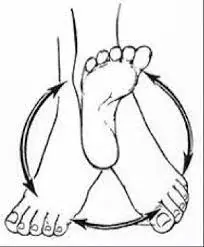
Deep breathing exercise
- Place yourself on the ground in the seated position first.
- Breathe in using your nose.
- Breathe out via your nose.
- Cover your stomach with a hand.
- Place your other hand across your chest.
- When you inhale, your stomach expands.
- Feel your stomach drop as you release your breath.
- The hand on your chest should move as little as the hand on your abdomen.
- Breathe deeply and fully three more times.
- Take long breaths, feeling your tummy expand and contract with each one.
- Then return to your neutral position.
- Then relax.
- Repeat these exercises 5 to 10 times.

Arm raise
- Start with a standing position.
- Relax your posture and put your arms by your sides.
- Make sure your feet are shoulder-width apart.
- Remember to have proper posture.
- Maintain a straight posture while raising your arms to the side.
- After your arms are level with the rest of your body, stop.
- Hold this position for a few seconds.
- Then return to your neutral position.
- Then return to your neutral position.
- Then relax.
- Repeat these exercises 5 to 10 times.
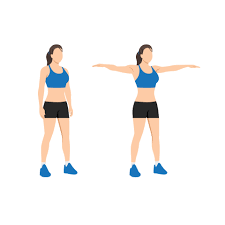
Elbow bend
- Start with a standing position.
- While standing, keep an arm at your side.
- Try to do your best to bend your elbow for as long as you are able.
- For several seconds, maintain your elbow bent.
- Then let go by extending your elbow.
- Then return to your neutral position.
- Then relax.
- Repeat these exercises 5 to 10 times.
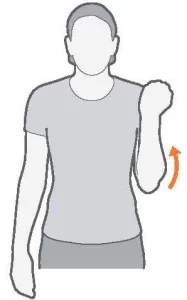
Static quadriceps
- Start with taking a long sitting position on the bed.
- Under your knee, place a little piece of the rolled towel.
- Pull the first foot in towards you while keeping the second foot slightly off to the side.
- When you strongly press your leg down, your thigh muscles will tense.
- Hold this position for a few seconds.
- Then return to your neutral position.
- Then relax.
- Repeat these exercises 5 to 10 times.
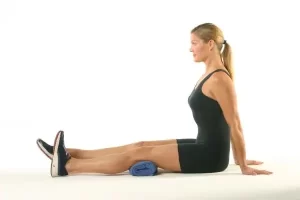
Wall push-up
- Start with a hip-width distance between your feet and the wall.
- Position your palms at shoulder height against the wall, pointing your fingers upward.
- Reduce the distance between your feet and the wall if you feel that you are reaching too far.
- Lean your body towards the wall and bend your elbows slowly until your nose nearly touches it.
- Hold this position for a few seconds.
- Then return to your neutral position.
- Then relax.
- Repeat these exercises 5 to 10 times.
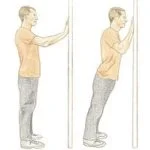
Bridging
- Place yourself in a comfortable position on your back.
- It can be beneficial to perform this exercise on a yoga mat or another soft surface.
- Ensure that your knees remain bent.
- Keep your feet flat on the floor.
- When you push from your feet, your hips need to rise off the floor.
- Squeeze your butt muscles when the activity is at its strongest.
- Hold this position for a few seconds.
- Then return to your neutral position.
- Then relax.
- Repeat these exercises 5 to 10 times.
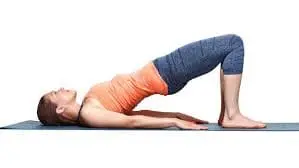
Knee to chest
- Start with your supine position on the floor.
- Pull one leg slowly towards your chest with your hands until your lower back begins to gently expand.
- During the stretch, ensure that your back is relaxed and level with the floor.
- Hold this position for a few seconds.
- Then return to your neutral position.
- Then relax.
- Repeat these exercises 5 to 10 times.
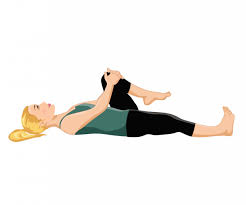
Squat
- Position your feet shoulder-width apart or slightly wider, depending on your comfort level.
- Keep your toes pointed slightly outward.
- To strengthen your core muscles, pull your belly button in the direction of your spine.
- The first thing to do is to press your hips back, much like when sitting in a chair.
- Keep your knees and toes in alignment.
- Bend your knees until your thighs are parallel to the floor or just below it as you lower your body.
- Avoid extending your knees past your toes to avoid putting too much strain on the knee joint.
- When you squat, keep your weight on your heels instead of your toes.
- Make sure not to lock your knees when you fully stretch your hips and knees at the highest position.
- Then return to your neutral position.
- Then relax.
- Repeat these exercises 5 to 10 times.
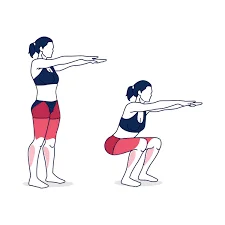
Lunges
- You must preserve a wide stance while maintaining your feet wide away.
- Both knees should be bent as you move your right leg forward and lower it until they form a 90-degree angle.
- Take your left leg and bend out.
- Follow each lunge with a step up, pushing off with both legs.
- Continue doing this until it feels comfortable on a different leg.
- Then return to your neutral position.
- Then relax.
- Repeat these exercises 5 to 10 times.
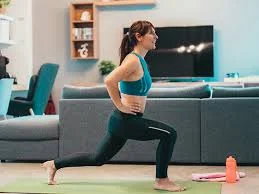
Sit-to-stand
- Choose a seat close to the front edge of a solid chair without armrests.
- Bending at the knees is recommended when your feet are level on the floor, shoulder-width apart.
- Put your hands on the seat’s sides.
- Your neck and back should be as straight as possible.
- Your chest should be slightly forward.
- Slowly inhale.
- Place just a little of your weight on your front feet and bend forward.
- As you slowly rise, exhale.
- Try your hardest to avoid supporting any weight with your hands.
- Give yourself a moment to stand and inhale deeply. Breathe deeply as you slowly settle in.
- To control your lowering as much as you can, strengthen your core and abdominal muscles.
- You should slowly lower yourself back to the chair rather than just settling back into the seat.
- Exhale slowly.
- Then return to your neutral position.
- Then relax.
- Repeat these exercises 5 to 10 times.
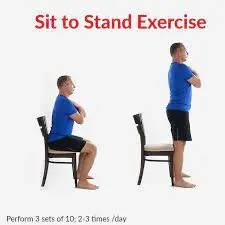
Step up
- You ought to start by standing on the ground.
- Put a lower platform or step box in front of you after that.
- Put one foot on the step.
- Push through your heel to elevate your body and straighten your knees and hips.
- Control your muscles rather than using force.
- Step back down gradually.
- Then return to your neutral position.
- Then relax.
- Repeat these exercises 5 to 10 times.
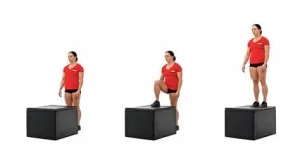
Tree pose
- Start by placing your arms by your sides while standing in Tadasana, or Mountain Pose.
- Put your left foot under more weight.
- After bending your right knee, grip your right inner ankle with your reaching hand.
- Walk your right foot along the inside of your left thigh with your hand.
- Try to place your left foot exactly above the middle of your pelvis.
- Next, make sure your left and right hips are in line.
- Put your hands on your hips and extend your tailbone in the direction of the floor.
- Once your thumbs are resting on your sternum, place your hands together in the prayer posture at your chest.
- Lower yourself through your left foot.
- While squeezing your left thigh equally against your foot, press your right foot against it.
- As you raise your arms upwards and touch the sky with your fingertips, take a breath.
- Turn your palms inside so they face one another.
- You can press your palms together in the overhead prayer position if your shoulders are more flexible.
- Hold this position for a few seconds.
- Then return to your neutral position.
- Then relax.
- Repeat these exercises 5 to 10 times.
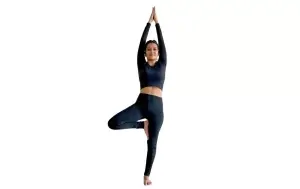
Stationary cycling
- On the bicycle, sit up straight.
- Maintain an upright back and relaxed shoulders.
- To stay stable when riding, engage your core.
- Make sure your pedal strokes are smooth and controlled.
- Keep your speed or pedal pace constant.
- Select a moderate speed that challenges you without overtaxing your knees.
- Every week, try for three to five 10- to 15-minute bike sessions.

Walking
- Walk over smooth surfaces, such as the road or inside area.
- Maintaining good posture requires you to try to keep your shoulders back and your abdominal muscles engaged.
- Try landing on your heel and then moving through to your toes.
- A constant moderate speed is good.
- Ten to fifteen minutes is a good starting point, and you can progressively extend it as you feel comfortable.

Which safety precautions must be taken when exercising?
Exercise safety is important during Guillain-Barré Syndrome (GBS) recovery to minimize harm, promote healing, and prevent recurrence.
Require medical clearance
- Always get your doctor’s or neurologist’s approval before beginning an exercise regimen.
- Make sure there aren’t any restrictions because of your health or recovery stage.
Begin slowly and advance gradually.
- Start with quick, low-intensity sessions that last five to ten minutes.
- Don’t follow a specific timetable; instead, increase the time or intensity just when your body is ready.
Exercises Should Be Modified for Current Ability
- If standing is hard for you, do activities that are sitting or in the water.
- Before moving on to strength or aerobic work, start with range-of-motion exercises and mild stretching.
If necessary, use assistive devices.
- If you struggle with balance or walking, use wheelchairs, grab bars, walkers, or braces.
- Practice your balancing skills close to parallel bars or solid surfaces.
Don’t Overdo It
- Post-exertional fatigue is common in GBS patients.
- After exercising, stop and take a break if you experience severe fatigue, weakness, or pain.
Make rest and recuperation a priority.
- Make time for relaxation days and allow your body to heal.
- Unless a specialist advises you otherwise, avoid training on consecutive days early in your rehabilitation.
Stay Hydrated and Eat Healthily
- Be certain that you’re getting proper protein and calories to help in muscle regeneration and repair.
Monitor Development and Make Adjustments As Necessary
- Note symptoms, weariness, and functional gains in your exercise journal.
- If your symptoms worsen or recur, or if your level of fatigue increases, modify your approach.
When did you stop exercising?
Based on your symptoms, degree of fatigue, and general reaction to exercise, here are several obvious situations in which you ought to stop exercising right away:
Breathlessness or lightheadedness
- If you have lightheadedness, dizziness, or trouble breathing when exercising, you should stop right away. These might indicate low oxygenation or cardiovascular strain.
Excessive Fatigue
- Stop if you have extreme fatigue during or after exercise and don’t feel better after resting.
- Even the following day’s fatigue could be an indication of overexertion because GBS can cause delayed fatigue.
More Weakness in the Muscles
- After working out, if your limbs feel weaker, heavier, or harder to move, stop and take a break.
- This can be a sign of nerve overuse or tiredness.
Cramping or Pain
- While mild muscle pain is common, cramping or severe, ongoing pain is not.
- Improper technique, nerve irritation, or muscle strain can all be indicated by pain.
Increases in Tingling or Numbness
- Stop right away if you have burning, tingling, or numbness that gets worse.
- These signs could indicate stress or inflammation of the nerves.
Loss of Coordination or Balance
- To avoid falls, stop if you feel unstable or uncertain, or if you have problems standing or walking.
- If necessary, exercise while seated or in water, or use support equipment.
Summary:
Guillain-Barré syndrome is a rare autoimmune disease that damages the myelin sheath, affecting the peripheral nerve system and causing weakness and numbness in the arms, legs, and upper body.
People with Guillain-Barré syndrome may benefit greatly from physical therapy and exercise during their recovery. For a rehabilitation process to be both safe and successful, it is essential to create a customized treatment plan and to approach physical therapy and exercise with caution.
Following the period of rehabilitation, the patient with Guillain-Barre Syndrome (GBS) learns how to use their energy positively. This can be achieved by making proper use of the body, eliminating unnecessary routines, and finding other ways to do challenging tasks. It is advised to use passive limb movements to maintain muscle flexibility and joint ranges of motion during immobilization. Physical therapy plays a crucial role in helping the patient regain muscle strength, limb control, balance, and coordination as they start to heal.
FAQ:
What kind of activity is ideal for those with Guillain-Barre Syndrome (GBS)?
You can strengthen the respiratory muscles impacted by Guillain-Barre Syndrome (GBS) and increase lung capacity by practicing deep breathing. Diaphragmatic breathing is a useful Guillain-Barre Syndrome (GBS) treatment that promotes efficient breathing and expands lung capacity.
When it comes to Guillain-Barre Syndrome (GBS), what should I avoid?
The body’s healing process can be helped by avoiding items such as processed foods, sugary snacks, and alcohol that cause inflammation or damage nerve health.
When you have Guillain-Barre Syndrome (GBS), should you exercise?
Balance, posture, joint mobility, and gait are all impacted by changes in soft tissue length, muscular weakness, and sensory abnormalities. Physical fitness can have a positive impact on mental functioning in addition to results like mobility and fatigue levels in Guillain-Barre Syndrome (GBS) patients.
After receiving a Guillain-Barre Syndrome (GBS) diagnosis, when can I begin exercising?
During the early stages of rehabilitation, which are frequently in the hospital, you can normally start extremely mild, passive movements. However, you should only start physical exercise when your physician or physical therapist has given the all-clear. Your strength, nerve healing, and respiratory stability all affect this timing.
Which exercises are safe to perform when recovering from Guillain-Barre Syndrome (GBS)?
Exercises involving range of motion (to prevent joint stiffness) stretching lightly, Aquatic therapy (body weight supported by water), Aerobic exercise that is supported or done while seated, such as arm cranks or cyclin, and Low-intensity resistance training (after muscles have recovered)
After Guillain-Barre Syndrome (GBS), how frequently should I work out?
Depending on your tolerance, start with brief sessions (5–15 minutes) once daily, two–four days a week. Increase gradually by your body’s reaction and the advice of your therapist.
Can physical activity alleviate fatigue associated with Guillain-Barre Syndrome (GBS)?
Over time, mild to moderate exercise can help lessen fatigue, but only if it is carefully balanced with enough rest. Energy-saving and balancing strategies are important.
Can I resume my regular level of physical activity?
Many Guillain-Barre Syndrome (GBS) patients make a full or partial recovery and resume their regular or almost regular activities. Recovery, however, differs. Some people could be weak or tired for a long time. Exercise improves results, but it must be customized to the situation at hand.
References:
- The most straightforward at-home physical treatment methods for Guillain-Barré sufferers in 2024 – Mohamoud
- Guillain-Barré Syndrome | Physical Therapy Restores Joint Functions and Muscle Strength | CB Physiotherapy Blog, Active Healing for Pain-Free Living. 2024: Physical treatment
- Physical Therapy Guide Guillain-Barré Syndrome Handbook, 2023
- A guide to GBS rehabilitation after hospitalization – GBS/CIDP Foundation International – 2024
- Exercise therapy for long-term Guillain-Barré
- Physio.co.uk – Guillain Barre Syndrome – neurological diseases – what we treat
- Conquering GBS: Physical Therapy’s Function in Rehabilitation – 2023 – Therapymantra
- Guillain-Barré Syndrome Recovery with Physiotherapy – 2025 – Admin
- Image 2, Image 2, Walking every day has seven advantages – HCA Houston Healthcare.
